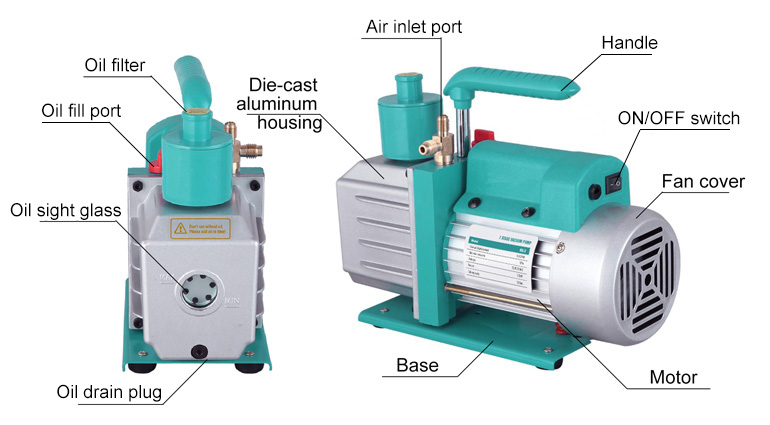How to Maintain a Rotary Vacuum Pump?
The quality of the vacuum pump is decided by its mechanical structure and the quality of the oil, it must be well protected when using the vacuum pump. When using distilling volatile organic solutions, it will be absorbed oil that will lead to the increase of vapor pressure and the decrease of vacuuming efficacy. If it is acid gas, it will corrode the oil pump, and if it is steam, it will destroy the vacuum pump from turning oil into emulsion.

Attentions while using vacuum pump:
- Between distillation system and vacuum pump, it has to be absorbing equipment.
- It has to completely eliminate the steam of organic solution in the system before distillation.
- If water pump can pump out the air, then use it as possible, but when distilling substance has volatile substance in it, using water pump for decompression then using oil pump will work.
- The decompression system must be kept airtight, all rubber plugs must be of appropriate size and orifice, the rubber tube should be a vacuum rubber tube, and the ground glass should be coated with vacuum grease.
Abrasion of pump shaft bearing
It is a normal issue that abrasion happens on the rotating part of rotary vacuum pump, including bearing position, bearing seat, bearing chamber, keyway and screw thread and other parts, the traditional methods are mainly repair welding and brush plating spraying. However, both of them have disadvantages, first of all, thermal pressure generated from high-temperature welding repair cannot be eliminated fully, and it will make material damaged, which could cause parts to bend and break. However, the brush plating layer is restricted by the limited thickness and is also quite easy to peel off. The two methods have been mentioned above are using metals to repair metals, which cannot change the "hard-to-hard" deep matching relationship. Under the various combined forces, it will still cause abrasion again.
Corrosion
There are two types of Vacuum corrosion: Full corrosion and partial corrosion, former more evenly appears on the full surface of vacuum pump, the latter only appears on partial of vacuum pump, such as pitting corrosion, crevice corrosion, intergranular corrosion, stress corrosion etc. Using polymer composite materials to implement the surface of organic coating anticorrosion on the vacuum pump, which has good chemical resistance and excellent mechanical and adhesion properties. The advantages of it are using convenience, low cost, safety performance and good repairing efficacy compared with traditional pressure vessel welding repair.
Shell cracks
Drawbacks of casting and processing, internal pressure, overload operation and some other reasons often cause cracks or breaks in parts of vacuum pump. Regular repairing solution is welding, but some material is cast iron, aluminum alloy, titanium alloy, which could be difficult to weld. And in some prone explosion environment, welding should be forbidden.

